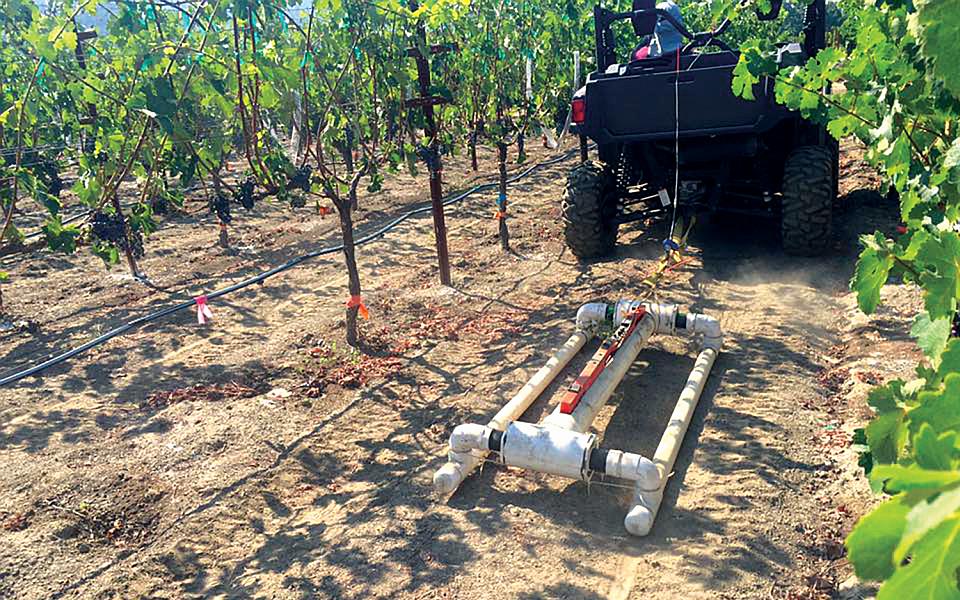How to Make Vineyard Management More Precise

The Geonics EM38 sensor helps measure soil conductivity. (Photo: Kaan Kurtural)
There are ways mechanization can help winegrape growers complete vineyard tasks more efficiently and make more informed vineyard decisions. One tool currently in development will help growers assess plants in a more direct way, leading to more effective pruning decisions.
Kaan Kurtural, Assistant Cooperative Extension Specialist for the Department of Viticulture and Enology at University of California, Davis, has worked for several years to address how mechanization can help with winegrape canopy management.
Currently, there isn’t a method available that allows winegrape growers to assess canopies in an accurate and timely manner, says Kurtural says.
High-Tech Sensor
Prior to harvest, some growers are using a canopy-reflective sensor, called the ACS 430 Sensor, to estimate pruning mass in vineyards.
This method is not a direct measurement, but it is fairly easy to complete, says Kurtural. Sensors are placed on a vehicle and directed at the canopy toward the shoot tips. The sensor emits light, and the light reflects back. The device tells you where the shoots are growing most vigorously and gives an idea of where they are growing most rapidly, explains Kurtural.
Vision System Bud Count
Another more direct measurement method uses a stereo vision camera to count the number of buds on the dormant canes to deduce pruning zones. This is still in its developmental stage and is not likely to be commercially available for several more years, Kurtural says.
During the dormant season, the stereo vision camera captures images at a rate of 10 photographs per second. The images are compressed and provide an image of the dormant canopy. This image has underlying data behind it, including shoot length, shoot diameter, and number of buds.
The precise data captured by this method provides the user with an exact number to work with and can help growers make more accurate and informed decisions on how to prune.
In addition, the University of California is developing software that growers will be able to use along with the canopy reflective sensor. The software will be free to growers and allow them to process the data they gather from using the equipment. It will provide real-time data output and generate the visual imagery necessary to help make vineyard decisions.
Advantages to Mechanization
There are multiple benefits to using mechanization tools like the canopy-reflective sensor and stereo vision camera.
“In a nutshell, these are two methods that are currently in development for people who are using precision viticulture,” Kurtural says. “They were developed based on grower demand. Vineyards in California are quite large. It’s not possible to measure or assess things in a timely manner.”
In a vineyard, results can vary widely, and one end may not crop the same as the other. This mechanization technology allows growers to fine tune down to each individual vine and achieve uniformity and consistency.
These measurement methods can help growers compartmentalize different characteristics and problems in the vineyard and make decisions to help the parts of the vineyard that are underperforming.
The values are loosely related to yields, so it can help growers determine whether to drop crops or change irrigation or fertilizing practices.
These tools provide a visual representation of the vineyard and help growers to make decisions on a larger scale.
“This is a way to monitor, control, and take action in vineyards,” Kurtural says.










